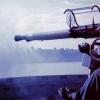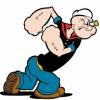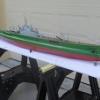-
Posts
1,171 -
Joined
-
Last visited
Reputation Activity
-
 jud reacted to wyz in Fletcher-class Destroyer by tozbekler - FINISHED
jud reacted to wyz in Fletcher-class Destroyer by tozbekler - FINISHED
Wonderful job! I love all the pictures.
Tom
-
 jud reacted to Mirabell61 in Fletcher-class Destroyer by tozbekler - FINISHED
jud reacted to Mirabell61 in Fletcher-class Destroyer by tozbekler - FINISHED
very well done Tozbekler,
you did an excellent job on your scratch build ...
Nils
-
 jud got a reaction from PeteB in Fletcher-class Destroyer by tozbekler - FINISHED
jud got a reaction from PeteB in Fletcher-class Destroyer by tozbekler - FINISHED
Some photos of the Fletcher I was a gunners mate aboard, we were in a collision on 19 june 1960, killed more than the Kamikaze that hit between the stacks while she was on picket duty in Leyte Gulf, both on the net if interested. The 3" 50 is not aboard the Ammen, but it is a good photo of the 3" gun, the 5" guns are in the configuration you want for the updated Fletcher you have, photo was just after collision, just before dry docking, counter flooding had leveled her out.
Doing some nice work, other than the lack of K guns, different torpedo tubes and the hedge hog launcher and guns needing some fine tuning, she looks good, only someone who served aboard such ships would be as fussy as I.
-
 jud got a reaction from tarbrush in Fletcher-class Destroyer by tozbekler - FINISHED
jud got a reaction from tarbrush in Fletcher-class Destroyer by tozbekler - FINISHED
Some photos of the Fletcher I was a gunners mate aboard, we were in a collision on 19 june 1960, killed more than the Kamikaze that hit between the stacks while she was on picket duty in Leyte Gulf, both on the net if interested. The 3" 50 is not aboard the Ammen, but it is a good photo of the 3" gun, the 5" guns are in the configuration you want for the updated Fletcher you have, photo was just after collision, just before dry docking, counter flooding had leveled her out.
Doing some nice work, other than the lack of K guns, different torpedo tubes and the hedge hog launcher and guns needing some fine tuning, she looks good, only someone who served aboard such ships would be as fussy as I.
-
 jud got a reaction from Matrim in HBMS Amphion 1798 by Matrim - 32 Gun 18pdr Frigate
jud got a reaction from Matrim in HBMS Amphion 1798 by Matrim - 32 Gun 18pdr Frigate
A follow up on lying out those circular curves is to locate where the tangents points are or where you want them to be first, then extend those tangents ahead and back to an intersection with the neighboring tangent. Laying the tangents out first will enable you to locate the radius points so all connecting curves are tangent to each other and also the curves will be tangent to any straight lines coming in or out of the curve or set of curves. Works with curve segments running in the same direction or for reversed curves, much easier to work with than spirals. Working with tangent circular curves is much easier than working with non tangent circular curves although there is a place for them, minimizing their number is good planning.
jud
-
 jud got a reaction from Tadeusz43 in Fletcher-class Destroyer by tozbekler - FINISHED
jud got a reaction from Tadeusz43 in Fletcher-class Destroyer by tozbekler - FINISHED
Some photos of the Fletcher I was a gunners mate aboard, we were in a collision on 19 june 1960, killed more than the Kamikaze that hit between the stacks while she was on picket duty in Leyte Gulf, both on the net if interested. The 3" 50 is not aboard the Ammen, but it is a good photo of the 3" gun, the 5" guns are in the configuration you want for the updated Fletcher you have, photo was just after collision, just before dry docking, counter flooding had leveled her out.
Doing some nice work, other than the lack of K guns, different torpedo tubes and the hedge hog launcher and guns needing some fine tuning, she looks good, only someone who served aboard such ships would be as fussy as I.
-
 jud reacted to tozbekler in Fletcher-class Destroyer by tozbekler - FINISHED
jud reacted to tozbekler in Fletcher-class Destroyer by tozbekler - FINISHED
this model is not kitt...ı apply various technicques..photo each,resin molding(taret and fire directory,funnel) and laser cuttig...but drawing very difficult because no plan ,no done,only litttle bad plan and photo...
-
 jud reacted to tozbekler in Fletcher-class Destroyer by tozbekler - FINISHED
jud reacted to tozbekler in Fletcher-class Destroyer by tozbekler - FINISHED
this model is not kitt...ı apply various technicques..photo each,resin molding(taret and fire directory,funnel) and laser cuttig...but drawing very difficult because no plan ,no done,only litttle bad plan and photo...
-
 jud got a reaction from mtaylor in HBMS Amphion 1798 by Matrim - 32 Gun 18pdr Frigate
jud got a reaction from mtaylor in HBMS Amphion 1798 by Matrim - 32 Gun 18pdr Frigate
A follow up on lying out those circular curves is to locate where the tangents points are or where you want them to be first, then extend those tangents ahead and back to an intersection with the neighboring tangent. Laying the tangents out first will enable you to locate the radius points so all connecting curves are tangent to each other and also the curves will be tangent to any straight lines coming in or out of the curve or set of curves. Works with curve segments running in the same direction or for reversed curves, much easier to work with than spirals. Working with tangent circular curves is much easier than working with non tangent circular curves although there is a place for them, minimizing their number is good planning.
jud
-
 jud got a reaction from popeye the sailor in Fletcher-class Destroyer by tozbekler - FINISHED
jud got a reaction from popeye the sailor in Fletcher-class Destroyer by tozbekler - FINISHED
Some photos of the Fletcher I was a gunners mate aboard, we were in a collision on 19 june 1960, killed more than the Kamikaze that hit between the stacks while she was on picket duty in Leyte Gulf, both on the net if interested. The 3" 50 is not aboard the Ammen, but it is a good photo of the 3" gun, the 5" guns are in the configuration you want for the updated Fletcher you have, photo was just after collision, just before dry docking, counter flooding had leveled her out.
Doing some nice work, other than the lack of K guns, different torpedo tubes and the hedge hog launcher and guns needing some fine tuning, she looks good, only someone who served aboard such ships would be as fussy as I.
-
 jud reacted to wrkempson in HBMS Amphion 1798 by Matrim - 32 Gun 18pdr Frigate
jud reacted to wrkempson in HBMS Amphion 1798 by Matrim - 32 Gun 18pdr Frigate
A masterful job. How rewarding to produce such a beautiful set of lines. I think you should be in pretty good shape for the work that follows.
Now, may I inject a few remarks on the subject of tracing the plan. On Naiad (I believe it was) Ed did not trace the lines so much as measure from the plan and then place the lines into his CAD drawing. If I do not recall this correctly someone let me know. Anyway, this got me to thinking about the idea of tracing the plan. I could be the one who has brought in the term since in the little treatise that I wrote I must have used a line such as "trace everything" or some such. This is what I did on Euryalus and Foudroyant and the results were quite usable.
However, since thinking some more about it, mere tracing is not quite the right way to go. For example, on the inboard profile the decks and inner bulkheads are a specific width (eg, a 3" deck planking). So, rather than tracing both lines, one line is placed on top of the plan line and then the second line is set parallel at the specified width from the first line. And thus throughout the inboard profile plan. In this way we are creating an accurate drawing that has "corrected" the vagaries of the original.
Even more significant is the way I would generate the rabbet lines of the stem. Rather than trace them with a Bezier (which I did on Euryalus) today I would generate an arc that is tangent to the top of the keel and passes through two points on the inner rabbet line of the stem. The top of the stem is a straight line which can be drawn in. Then a second arc is generated as tangent to the first arc and tangent to the straight line and passing through one point on the plan. The result is a rather elegant line.
In the picture below, the red arc is tangent to the top of the keel, the yellow line is straight, and the blue arc reconciles the arc to the line. When cleaned up the result is the inner rabbet line.
When trimmed, this inner rabbet line can be copied offset the prescribed distance (for example, 3" depending on the call out of the hull planking).
A similar procedure can be followed to generate the cutwater by a series of reconciled arcs rather than by using a Bezier. In the picture below there are seven arcs that define the cutwater. If you trim off the loose ends the results is indeed serpentine.
The hang of the decks I have to put in with a Bezier. I suspect the shape of the line might be a catenary, but even if so I don't think my CAD has a catenary tool anyway. But once the deck line is drawn in, the attending lines indicating round up should be placed in through measurement as was done in the old days. This again results is a more accurate drawing that has reworked the old drawing and thereby corrects what was lost due to age and distortion.
I think these observations may apply to the frame/station lines as well, but I have not substituted arcs and lines for the Beziers I used on Euryalus. I am doing just that on my current project.
Well, this is a rather long winded way to applaud your work and cast my vote for more of the same. The observations above are just an articulation of my current thinking.
Wayne
-
 jud reacted to Matrim in HBMS Amphion 1798 by Matrim - 32 Gun 18pdr Frigate
jud reacted to Matrim in HBMS Amphion 1798 by Matrim - 32 Gun 18pdr Frigate
Thanks both for the comments. Wayne, you appear to be moving to 'full shipwright' status. Have you considered a book on plans. Might be a possibility when you are happy with your approach....
Mark I tend to colour the water lines and have not had particular problems with the stations mainly because I switch the colour of the one I am working on to bright yellow and the ones done to a different colour so I don't tend to get confused. Then again I have probably entirely misunderstood the point..
-
 jud reacted to Mark P in HBMS Amphion 1798 by Matrim - 32 Gun 18pdr Frigate
jud reacted to Mark P in HBMS Amphion 1798 by Matrim - 32 Gun 18pdr Frigate
Hi Matrim;
thank you for the reply. Everybody develops their own way of working, and if it works well, that's all we need. I thought that you would probably have your own system to avoid confusing frames, as it seems to be necessary. I had not really thought of using a temporary colour change. I'll keep it in mind as it might well be useful for other things.
All the best,
Mark P
-
 jud got a reaction from Piet in Fletcher-class Destroyer by tozbekler - FINISHED
jud got a reaction from Piet in Fletcher-class Destroyer by tozbekler - FINISHED
Some photos of the Fletcher I was a gunners mate aboard, we were in a collision on 19 june 1960, killed more than the Kamikaze that hit between the stacks while she was on picket duty in Leyte Gulf, both on the net if interested. The 3" 50 is not aboard the Ammen, but it is a good photo of the 3" gun, the 5" guns are in the configuration you want for the updated Fletcher you have, photo was just after collision, just before dry docking, counter flooding had leveled her out.
Doing some nice work, other than the lack of K guns, different torpedo tubes and the hedge hog launcher and guns needing some fine tuning, she looks good, only someone who served aboard such ships would be as fussy as I.
-
 jud reacted to dashi in HM Bark Endeavour by dashi - Caldercraft - scale 1:64 - 1768-71 - bashed kit
jud reacted to dashi in HM Bark Endeavour by dashi - Caldercraft - scale 1:64 - 1768-71 - bashed kit
Roughtree rails and swivel gun posts.
Pre drilled eyebolt holes in the deck before fitting the roughtree rails and pre drilled swivel gun mounting holes in posts before fitting. Glued a length of 1x4mm walnut on the top of the main deck rail to give it the extra thickness and overlap onto the quarterdeck bulwark capping as indicated in the draughts.
Cheers Dashi
-
 jud reacted to dashi in HM Bark Endeavour by dashi - Caldercraft - scale 1:64 - 1768-71 - bashed kit
jud reacted to dashi in HM Bark Endeavour by dashi - Caldercraft - scale 1:64 - 1768-71 - bashed kit
Thanks Pat and Dave and all the likes.
From here I started researching the positions of eyebolts on the deck and especially those running next to the bulwarks before I fit the rough tree rails which will be in the way if I don't do this now. By bashing the stanchion positions to match NMM draught ZAZ7844 I've deviated from the kit and AOS which has thrown up a bit of a research challenge for me. One thing I'll mention now is that I've noticed a timberhead lurking behind the forward quarterdeck stanchion which looks like it might be there for belaying the forecourse sheet to. To clear the carriage guns and give the 5-6' room needed to allow enough hands to belay the forecourse sheet I might lead the sheet through the chess tree (Ship Model Builder's Assistant p.153) below the main tack fairlead and then up and rove through a block on the second forward quarter deck stanchion then forward belaying to the timberhead. This would be instead of the sheaves shown in AOTS and NMM draught ZAZ6587. But more on that later after more research and I've finalized and drilled those eye bolt holes in the deck.
I wanted to have a go at making my idea of the tiller braces so re-made the rudder head straps using brass and card to facilitate this. It appears that initially Cook had ordered the Armourers to 'repair the tiller braces' when they set up the forge at Queen Charlotte's Sound New Zealand. I assume this last repair didn't work, so then he ordered the wooden tiller support to be made to replace them. I won't include the tiller braces in the final fit. I've also included an iron rail on the wooden tiller support and skid under the tiller made from card because I believe these would be needed.
Cheers Dashi
-
 jud reacted to wefalck in A Lorch Micro-Mill that never was ...
jud reacted to wefalck in A Lorch Micro-Mill that never was ...
Thanks Pat and I hope you have enough Kleenex around
*****************************************************************************
After some disruptions due to travelling (spent inter alia a couple of days in Pisa for work ) I tackled a job I had never done before:
Digression: making a concave knurling wheel
Today, concave knurls to produce the convex knurling seen on many older high-end precision machines are obtainable only at prohibitive costs. Therefore, I embarked on making my own knurl, encouraged by a few examples on the Internet. Knurling wheels normally have to have a certain diameter in order to prevent their bore from being distorted under the stress of the knurling process. I choose a blank of only 10 mm diameter for a bore of 6 mm in order to reduce the mass to be heated, when attempting to harden the knurl with my rather limited heating capabilities. I also had a cut-off from a Schaublin collet-blank available, which I assumed would harden nicely.
Hobbing the knurl on the milling machine
The proposed process of creating the knurling wheel employs an ordinary threading tap as an improvised hob. This, stricly speaking, would result in a 'rope' knurl, but the helical angle of a, say, 0.4 mm pitch tap is barely perceptible. The easiest way to hold the blank for cutting seemed to hold it in the knurling-holder for the watchmakers lathe that I made a few years ago. This means, however, that the process could not be done on the lathe, because it would have been not so easy to mount the holder on its side. Cutting the knurl on the lathe would have been better, as the end of the tap could have been supported in the tailstock in order to eliminate flexing. Unfortunaly, the DIXI horizontal mill does not have an overarm, which then would make it the ideal machine for the job. So the job was done on the vertical mill.
Hobbing process in detail
The blank was drilled and reamed for the arbor of the knurling tool holder. Some polishing ensured that it spun freely. A M2 tap was chucked in a collet as short as possible and offered to the blank with its uppermost end in order to keep flexing to a minimum. Initially, the mill was run at slow speed and with a small feed. After each incremental feed, the blank was allowed to make several revolutions until no chips were produced anymore. Once the pattern was created, the mill was run at a somewhat higher speed and the amount of incremental feed increased from around 0.03 mm to 0.05 mm. Every time blank and tap were flooded with WD40 in order to wash out the chips that then were wiped off. A first failed trial showed, how important it is to wash-out chips. The second attempt was successful.
The finished concave knurl
After the machining, the knurl was hardened by heating it to a cherry-red colour and quenching it in ice-cold water. As I don't have a very strong torch, the knurl was pre-heated to 450°C using the hot-air soldering gun and then brought to temperature with the gas-torch. The knurl was also rubbed in soap to prevent scaling. After some cleaning, the hardened knurl was tempered to a straw-yellow colour using the the hot-air gun. A test with a file showed that the hardening was successful.
The knurl in the tool-holder for the watchmakers’ lathe
... well, it actually worked as you will see in the next contribution
To be continued ...
-
 jud reacted to NenadM in Cutty Sark by NenadM
jud reacted to NenadM in Cutty Sark by NenadM
Thx Patrick
At least, I retutned to shipyard and finished all dech dead-eyes lines
Next is cleaning, color repairs and color corrections of inner bulwark space on main deck
-
 jud reacted to grsjax in roter table for dremel
jud reacted to grsjax in roter table for dremel
Dremel makes a router table that is cheaper but does not hold the tool as securely. Here is a link to a DIY router table made from plywood.
http://lumberjocks.com/projects/87681
-
 jud got a reaction from Canute in roter table for dremel
jud got a reaction from Canute in roter table for dremel
Would be happy to except it's long gone, made it in the 70s when my wife wanted some decorated boards for Decoupage or whatever she was doing at the time, routed a bunch for her and friends. All it was, was a 1" X 12" pine board about 2 feet long, drew a circle that matched the router base and routed it out part way through for the base to fit into, bolted the router in and routed a center hole for the bits to fit through. Then attached the thing to a frame of a TV stand I had lying around, sometimes I used a board for a guide, 'fence', used C clamps to hold it in place. Worked well, had both hands free to control the work, took about a hour to make including gathering up the materials. Haven't needed it since and has been a while and several moves ago when I saw it last. Did do something similar using a jig saw that worker better than free hand, it also has disappeared. If the need comes, making replacements will be no problem. All you need is a surface with an opening for the blade or cutter to protrude from, a way to attach the saw or router below on a stand of some kind, C clamps and sawhorses would work, a board and C clamps for a guide if needed. Most of the time a guide is not necessary, many cutters will guide themselves and a jig saw, just follow the lines and finish on a sander. Good luck.
jud
If your first one comes out a little rough, use it to make a better one.
-
 jud got a reaction from WackoWolf in roter table for dremel
jud got a reaction from WackoWolf in roter table for dremel
Would be happy to except it's long gone, made it in the 70s when my wife wanted some decorated boards for Decoupage or whatever she was doing at the time, routed a bunch for her and friends. All it was, was a 1" X 12" pine board about 2 feet long, drew a circle that matched the router base and routed it out part way through for the base to fit into, bolted the router in and routed a center hole for the bits to fit through. Then attached the thing to a frame of a TV stand I had lying around, sometimes I used a board for a guide, 'fence', used C clamps to hold it in place. Worked well, had both hands free to control the work, took about a hour to make including gathering up the materials. Haven't needed it since and has been a while and several moves ago when I saw it last. Did do something similar using a jig saw that worker better than free hand, it also has disappeared. If the need comes, making replacements will be no problem. All you need is a surface with an opening for the blade or cutter to protrude from, a way to attach the saw or router below on a stand of some kind, C clamps and sawhorses would work, a board and C clamps for a guide if needed. Most of the time a guide is not necessary, many cutters will guide themselves and a jig saw, just follow the lines and finish on a sander. Good luck.
jud
If your first one comes out a little rough, use it to make a better one.
-
 jud got a reaction from mtaylor in roter table for dremel
jud got a reaction from mtaylor in roter table for dremel
Would be happy to except it's long gone, made it in the 70s when my wife wanted some decorated boards for Decoupage or whatever she was doing at the time, routed a bunch for her and friends. All it was, was a 1" X 12" pine board about 2 feet long, drew a circle that matched the router base and routed it out part way through for the base to fit into, bolted the router in and routed a center hole for the bits to fit through. Then attached the thing to a frame of a TV stand I had lying around, sometimes I used a board for a guide, 'fence', used C clamps to hold it in place. Worked well, had both hands free to control the work, took about a hour to make including gathering up the materials. Haven't needed it since and has been a while and several moves ago when I saw it last. Did do something similar using a jig saw that worker better than free hand, it also has disappeared. If the need comes, making replacements will be no problem. All you need is a surface with an opening for the blade or cutter to protrude from, a way to attach the saw or router below on a stand of some kind, C clamps and sawhorses would work, a board and C clamps for a guide if needed. Most of the time a guide is not necessary, many cutters will guide themselves and a jig saw, just follow the lines and finish on a sander. Good luck.
jud
If your first one comes out a little rough, use it to make a better one.
-
 jud got a reaction from mtaylor in roter table for dremel
jud got a reaction from mtaylor in roter table for dremel
Having built my own router tables using ply board before they were commercially available, I would say no. Would something like it be handy to have around, sure would. If you have the ability to use such a device, you also have the ability to make your own custom version, that is what I would do.
jud
-
 jud got a reaction from EJ_L in roter table for dremel
jud got a reaction from EJ_L in roter table for dremel
Would be happy to except it's long gone, made it in the 70s when my wife wanted some decorated boards for Decoupage or whatever she was doing at the time, routed a bunch for her and friends. All it was, was a 1" X 12" pine board about 2 feet long, drew a circle that matched the router base and routed it out part way through for the base to fit into, bolted the router in and routed a center hole for the bits to fit through. Then attached the thing to a frame of a TV stand I had lying around, sometimes I used a board for a guide, 'fence', used C clamps to hold it in place. Worked well, had both hands free to control the work, took about a hour to make including gathering up the materials. Haven't needed it since and has been a while and several moves ago when I saw it last. Did do something similar using a jig saw that worker better than free hand, it also has disappeared. If the need comes, making replacements will be no problem. All you need is a surface with an opening for the blade or cutter to protrude from, a way to attach the saw or router below on a stand of some kind, C clamps and sawhorses would work, a board and C clamps for a guide if needed. Most of the time a guide is not necessary, many cutters will guide themselves and a jig saw, just follow the lines and finish on a sander. Good luck.
jud
If your first one comes out a little rough, use it to make a better one.
-
 jud reacted to aviaamator in How to make best use of your milling machine. Tips and techniques
jud reacted to aviaamator in How to make best use of your milling machine. Tips and techniques
Worked!!!












